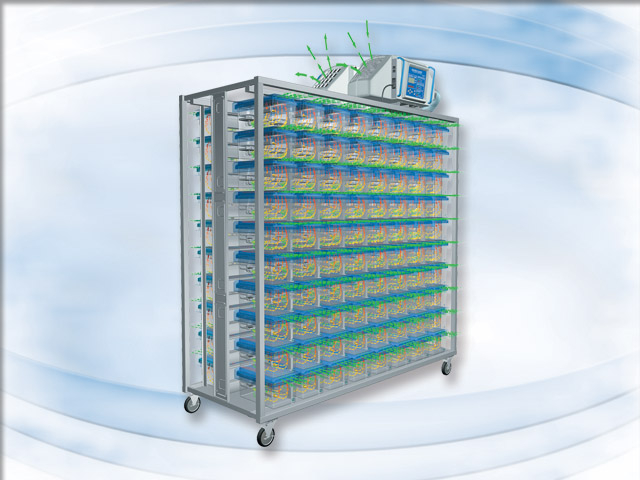Balanced Airflow
Balanced airflow enables researchers to maintain minimal airflow variations among individually ventilated cages and provides improved indoor air quality for personnel. It safeguards the integrity of research studies, and creates a healthier environment by limiting the exposure of personnel to airborne allergens.
AllerZone™ technology offers the leading edge in ventilated cage airflow balance with the only high density individually ventilated cage technology available to achieve precision balance, within less than 1 tenth of one CFM of airflow per cage.
Low velocity HEPA filtered air is delivered (direct connection) to the floor level of each individual cage through a unique cage mounted air diffuser grommet. The rack air exhaust system captures (indirect connection) expelled cage air, animal dander, allergens and odors along with additional room air, through a patented exhaust canopy, encompassing the sides, rear and top of Micro-Isolator® cages. Because of the direct supply air and indirect exhaust air approach, airflow remains balanced with any number of ventilated cages present on a rack.
Micro-isolation effectiveness will not be compromised should power fluctuations or a power loss occur. If ventilation is disrupted, Micro-Isolator® ventilated cages immediately revert to static cages (non-ventilated mode) with a Petri Dish effect, providing air exchange so rodents can breathe. A critical engineering control, cages that default to an isolated static mode help avoid or reduce related animal stress and mortality that may otherwise negatively impact the interpretation of research results. It also aids facilities in planning and responding to natural and other disasters, helping avoid potentially catastrophic losses by extending the window of opportunity for cage intervention, when time becomes most precious.

Balanced Airflow
